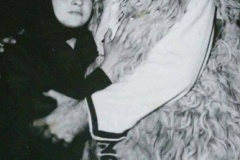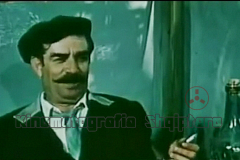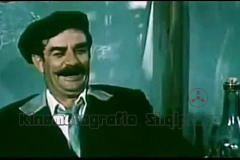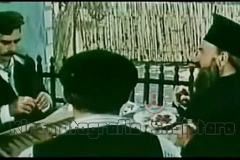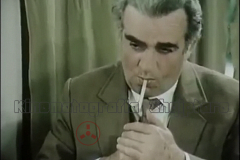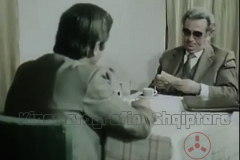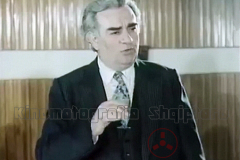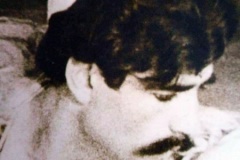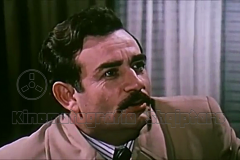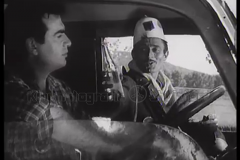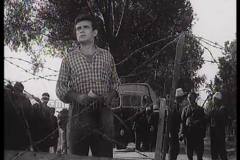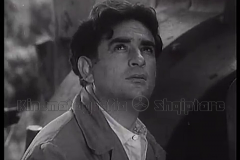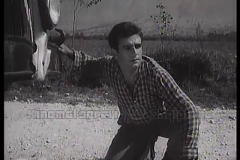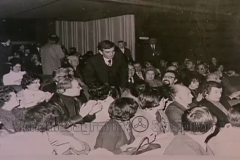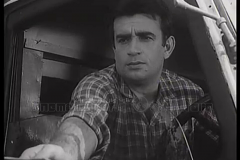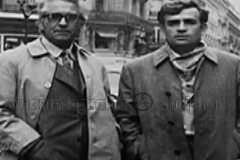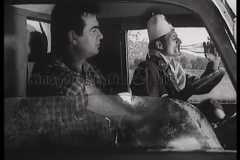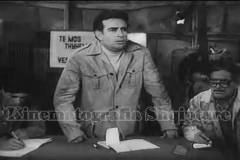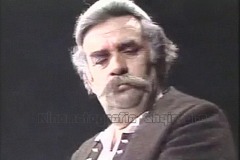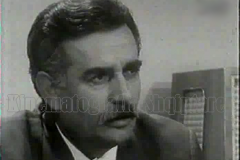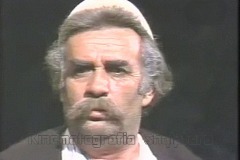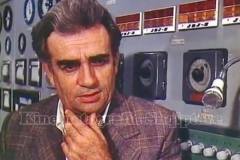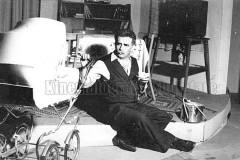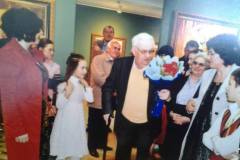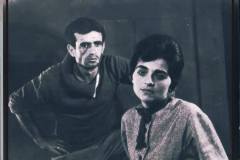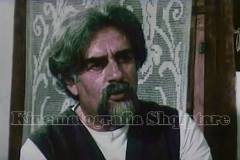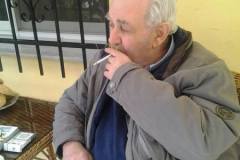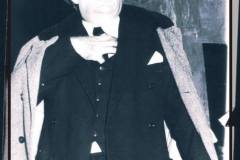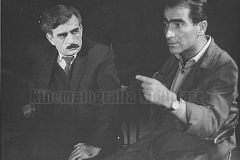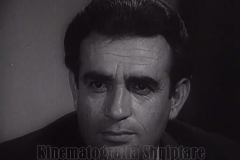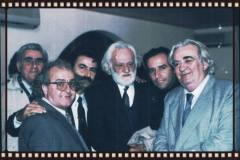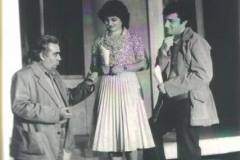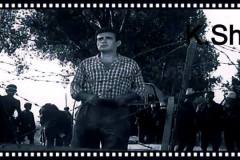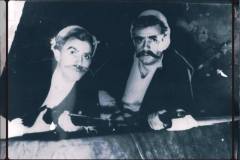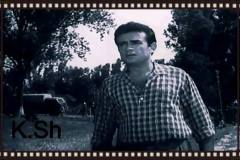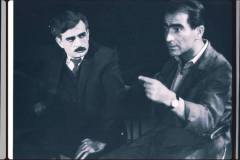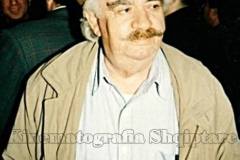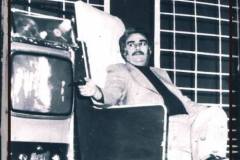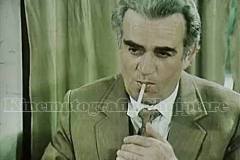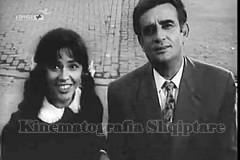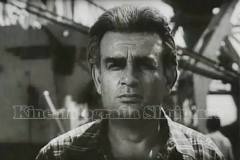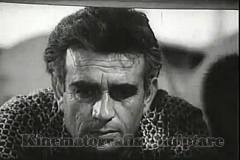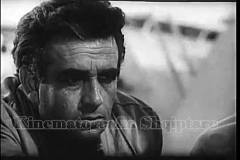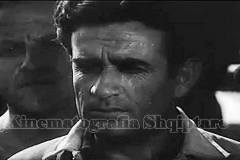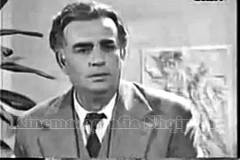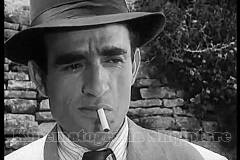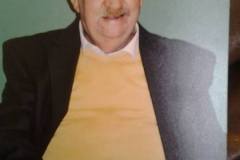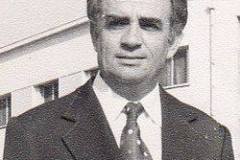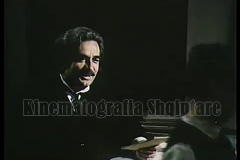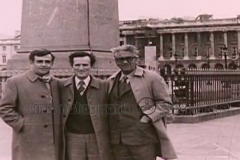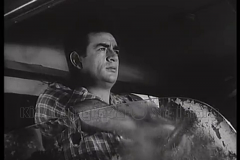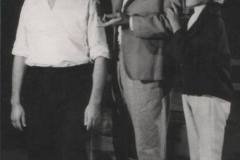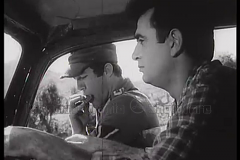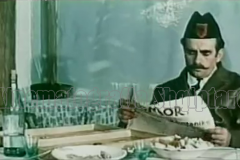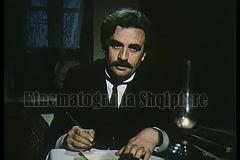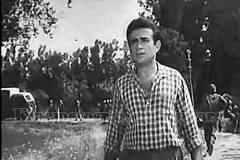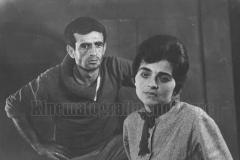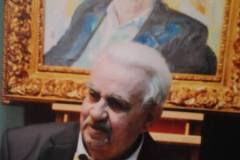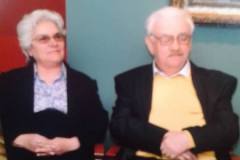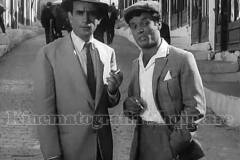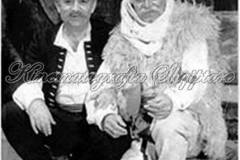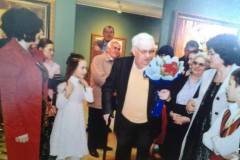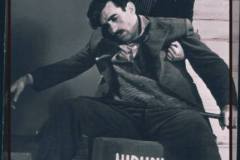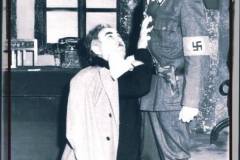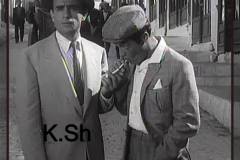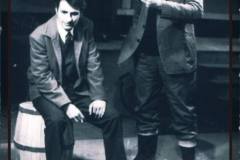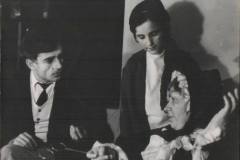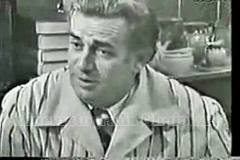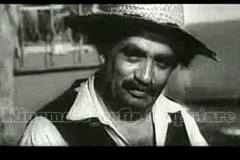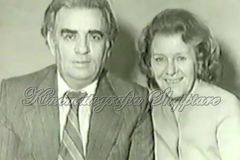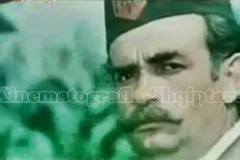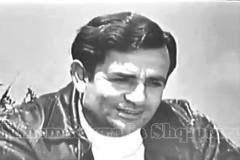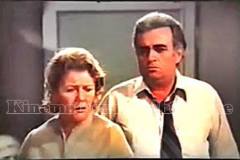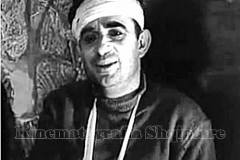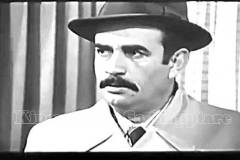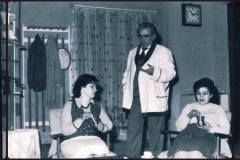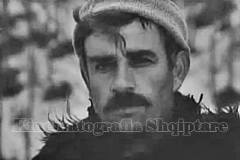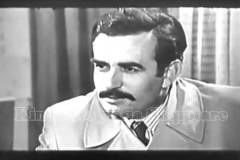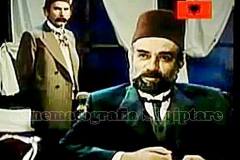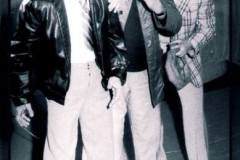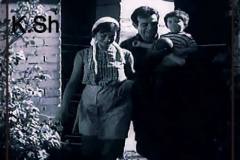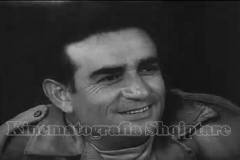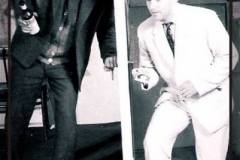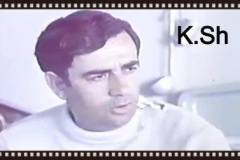Demir Hyskja (1937 – 2016)
Actor of the “Skampa” theater – Elbasan and one of the icons of acting in Albanian cinema. Hold the title “People’s Artist”
Born in Elbasan on January 1, 1937. During the years 1951-1955 he completed high school in construction and worked as a technician from 1955 to 1962. Hyskja attended a 6-month course for actors at the “Teatri Popullor”. After he completed his correspondence studies for actors at the Academy of Arts.
He started it at a time with names like Rikard Larja, Vace Zela, but was forced to leave after the birth of his daughter. Hyskja worked continuously at the “Skampa” Theater in Elbasan since its creation in 1962 until his retirement in 1992, where he performed 100 roles in 60 plays, drama and comedy in this art institution, and almost the majority of them are the main ones.
He managed to become one of the most prominent individuals of this Theater. He stands out in the role of Deli Pjetri in the drama “Shtate shaljanet” by Ndreke Luca (A.P), striking with his charm of interpretation, pure diction, self-restraint and inner dramatic state. In 1966, he embodied the role of Veliu in the drama “Udha e Zavalineve” by Thanas Borodani, with which he presented a parasitic, intriguing and drunkard man.
Then he continued with the role of Bujar in the drama “Signals of the Night” by Fadil Kraje in 1970 and reached the most mature and passionate achievements of his career as an actor when he played Jonuz Brunge in “The Fisherman’s Family” in 1971, a figure which he re-dimensioned by giving him more social space.
Two years later, in 1973, he also performed masterfully in Loni Pape’s drama “Cuca e maleve” in the role of Gjetos. He continued with the role of Hodo Zimani in the dramatization of Dritero Agolli’s work in “Njeriu me top” with the title “Hakmarrja e madhe” dramatized by Astrit Cerma in 1976.
A year earlier (1975) he had portrayed, with a simple and humane language, Zeneli in the drama “The Milanio-Stelle Brothers”, while in 1978 the role of Uncle Banushi in the drama “The Patient Doctor” by R. Pulaha. In 1983 he arrived at one of his most impressive and nationally spirited characters, that of Uncle Rama in the drama “Toke e ndezur” by Fahri Balliu.
The artist Demir Hyskja has also performed a passionate performance in the role of the lawyer Demonzi in Pellumb Kulles’ “Two shots in Paris”. He has also played many characters in foreign dramaturgy, among the most prominent are John in John Gollsworth’s “The Silver Box”, the judge in Haifa-Volkjor’s “Justino”, Beni in Liljan Helman’s drama “Neperka”, etc.
Demir Hyskja has also acted in 27 feature and television films in which his acting, voice and portrait created the opportunity to present with grace and scenic beauty, characters with a broad spirit, noble people with a positive outlook.
In 1967, he will have his first contact with the Artistic Film and Kinostudio. He plays a spy role in “Ngadhenjim mbi vdekjen” together with the great actor of the time such as Naim Frashëri.
Also, the roles and interpretations in several documentaries should not be left unmentioned, which raise the figures and contribution to the Albanian scene several times more. “People’s Artist” Demir Hyskja has received decorations of various degrees several times up to the “Naim Frashëri of the First Class”.
In 1969 Hyskja was honored with the title of “Merited Artist”. Also around this year he was elected a deputy in the People’s Assembly. In 1975, with the role of Halimi in “Rrugica qe kerkonin diell” he was honored with the Festival Medallion. Hyskja was also honored with the Festival Medallion for the role of Agron’s father in the film “Shodows that remain behind” (1985) and for the role of Klare’s father in “Dhe vjen nje dite” (1986).
In 1992 he retired.

His photogenic as well as the warmth of his words often made him a favorite in cinematography for inspiring figures of the heroic-positive side as well as those who communicated ideas. Since 1979 he was awarded the title of “People’s Artist”
Not only Cinema: For the People’s Artist Demir Hyskja, the most passionate part remains not only the Theater but also his beloved team……Milan!
The artist passed away on August 6, 2016
Filmography
1967: Triumph over Death
1970: The Courageous (Kids)
1970: The Trace
1971: When a Day Dawned
1971: War Mornings
1974: The Blast
1974: Operation “Fire”
1975: The Alleys that seeks Sun
1975: In the beginning of summer
1976: Threads that are cut
1976: The Forest of Freedom
1977: A difficult journey
1978: The Toast of my wedding
1978: The Partisan grandfather
1978: The Third
1979: Beyond the stone walls
1979: One November night
1979: With the step of Comrades
1980: An incident in the port
1980: Martyrs of the monuments
1982: The Companions
1982: The Second of November
1983: A Name Among People
1983: Distant Time
1984: Green Field, Red Field
1985: Shadows That Remain Behind
1986: Chronicle of Those Nights
1986: And One Day Comes

It was first published by “Kinematografia Shqiptare” on Facebook in January 2014. It was revised in the following years/
__________________________
Albanian Cinematography in activity since 2013
*In creating this material, the K.Sh. website used photos taken from the Skampa-Elbasan Theater and photos from feature films in which the actor starred. Text from references in web-newspapers, online forums; Book “Encyclopedia, Albanian Theater and Cinematography”;
Na ndiqni edhe ne: Blog: https://albaniancinematography.blogspot.com/ Facebook: https://www.facebook.com/ksh.faqjazyrtare Dailymotion: https://www.dailymotion.com/kinematografiashqiptareartisporti YouTube: https://www.youtube.com/channel/UCDRYQ5xCyGkfELm3mX8Rhtw
Discover more from Albanian Cinematography - Sport
Subscribe to get the latest posts sent to your email.

